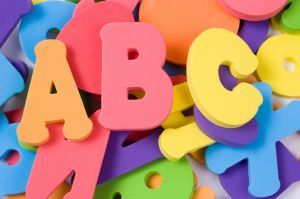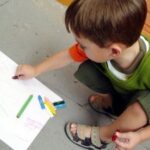In the current world of “No Child Left Behind” and high stakes testing, kindergarten has changed drastically and the days where the curriculum focused on social skills and self care with a few academic skills in between are gone. The expectations for kindergarten today are comparable to what the expectations for first grade were five to ten years ago. Many children entering kindergarten in school districts across the nation are now expected to be able to identify all of the upper and lower case letters of the alphabet (and know some of the sounds that go with them), recognize and write their first name, rote count to 20, understand one to one correspondence when counting, identify basic colors and shapes, and even identify some basic sight words. By the end of the year, they will be reading books and completing addition and subtraction problems. Whether a child attends a preschool program or not, these increased expectations can place a great deal of pressure on parents. Fortunately, learning the alphabet does not have to be an overwhelming experience and there are a number of ways to incorporate teaching the alphabet into daily activities so that it can be fun experience for parents and children.
Take advantage of technology
There are a number of educational toys available on the market and it can be difficult to choose just a few. I have had the most success with the Leap Frog toys. From my experience, they are durable, make learning fun for children, and are reasonably priced.
For my daughter’s first birthday, she got the Leap Frog Alphabet Pal Caterpillar. At that time, it was perfect for her because it is a “pull toy” that she could drag around with her as she was just starting to walk. She loved it because the antennae light up and it plays the “ABC” song. Each of the caterpillar’s 26 legs has a different color and letter of the alphabet. There are different settings to promote music awareness, color identification, and then letter and sound identification. It is definitely a toy that grows with your child and almost two years later, my daughter still loves it.
When my daughter was eighteen months old, we bought her the Leap Frog Fridge Phonics. The set includes magnetic letters for each letter of the alphabet as well as a letter reader. Each letter has a song that goes with it and also teachers the letter name and sound. We put this set on the refrigerator in our kitchen and my daughter would play with it while I was making dinner or doing dishes. By the time she was two, she could identify several letters of the alphabet and could even tell me what sounds they made. I think this has been one of the most valuable toys in teaching her letter identification.
We just recently purchased the Leap Frog Fridge DJ Learning Radio. There are three different “stations” which include music, activities to teach the alphabet, and activities to teach number awareness. My daughter loves the songs. It includes an LED light display for the letters and numbers.
Use hands-on experiences
There are a number of hands-on activities that you can use to make learning the alphabet fun for your children. One easy way to do this is to use food. You can introduce different letters and associate them with food (for example A=apple, B=banana). You can serve alphabet cereal (either for breakfast or as a snack) and take turns finding different letters. You can make pancakes in the shape of different letters of the alphabet or use cookie cutters and cut out the shapes of letters of the alphabet and then decorate them.
Create an alphabet book with your child. You can take pictures of different items that are associated with different letters of the alphabet, cut out pictures from magazines, or print off coloring pages online. If your child enjoys Sesame Street, there are some great coloring pages available for free on SesameStreet.com. The DLTK site also has a number of free activities and coloring pages.
Toys do not have to be “high tech” to be fun and educational. Spend time building towers with blocks. This helps to build visual-motor coordination and can work on identifying the letters on the blocks along the way. There are also a number of great puzzles with wood alphabet letters on the market. You can also buy an inexpensive package of magnetic letters to place on your refrigerator. As your child gets older, a chalkboard, easel/white board, or Magnadoodle toy where you can work on writing and identifying the letters is a great option. When you are working on writing letters, you can also include activities such as writing the letters on the sidewalk using chalk or in the bath tub using shaving cream. Another option is to use a peg board and rubber bands to create the letters. You can also draw the letter on a piece of paper and then glue beans or macaroni onto the letter to allow your child to “create” the letter.
Don’t underestimate the power of reading
It is never too early to start reading to your child. My daughter was only a few months old when we began reading books to her and now she loves books and will often spend time sitting by herself looking through them and trying to “read” them. As you are working on teaching alphabet awareness to your child, point out different letters as your read. There are also some great books that focus on teaching the alphabet.
One of my daughter’s favorite books is Chicka Chicka Boom Boom by Bill Martin Jr. and John Archambault. Essentially, the letters of the alphabet make a journey to the top of a coconut tree. Eventually, the tree can no longer support the weight of all the letters and they end up falling to the ground with a loud boom. The colors are bright and the story line has a bouncy rhythm which will hold your child’s attention.
Another great book is Dr. Seuss’s ABC book. This is not a “standard” alphabet book that pairs letters with standard objects such as apples, balls, and cats. It has fun pictures and catchy phrases and children love it.



